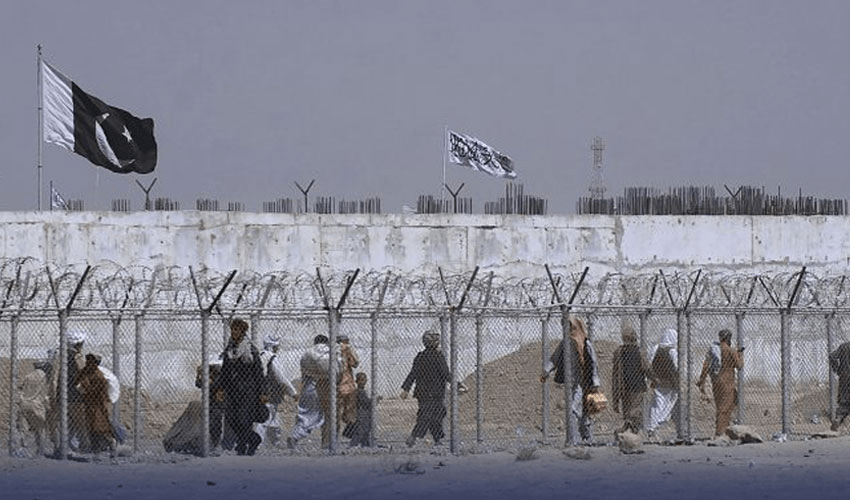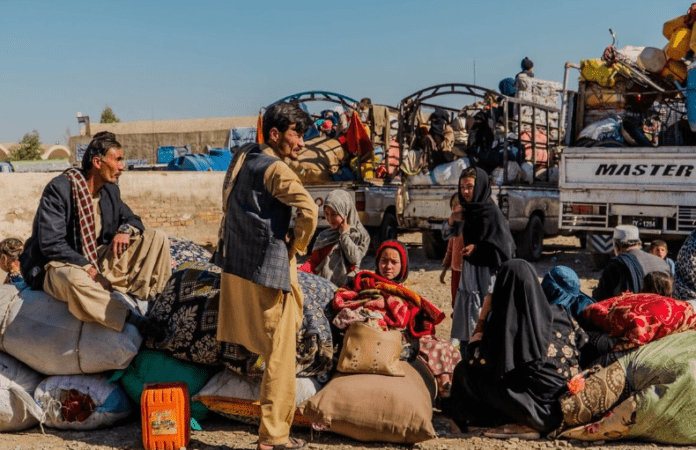If Pakistan fails to formulate a clear policy regarding Afghan refugees, this predicament could transform into one of our worst nightmares. The people of Pakistan eagerly anticipate electing their genuine representatives who can devise a policy aligned with the sentiments of the common citizens. A policy devoid of a people-centric approach is unlikely to bring about meaningful change. All stakeholders must collaborate in making decisions on such delicate matters. Pakistan initially welcomed Afghan refugees, setting a unique example with three million refugees being accommodated. Unfortunately, the governments failed to recognize that, for a developing country like Pakistan, this was not a prudent economic decision. The combination of limited resources, a deteriorating economic situation, and security challenges led to a miscalculation, exacerbating the existing problems. The establishment seems to have forgotten its history, as have the people of Pakistan. Initially, Pakistan supported the U.S. and the Saudis in ending the communist regime in Afghanistan, a policy deemed right at the time without considering the humanitarian aspect. The Afghan Jihad and its glorification prevailed. According to a 1986 report from the Political Committee of the European Parliament, in 1978, approximately 1.5 million Afghans died, and around 4.5 million fled to neighbouring countries—Iran and Pakistan. This constituted nearly 40% of Afghanistan’s population. The consequences for Pakistan encompassed economic, political, social, strategic, and foreign policy aspects. Regrettably, we seem not to have learned from these past experiences.
The immediate reaction to the Soviet invasion lacked calculated wisdom, leaving a lasting impact on Pakistan’s foreign policy. It wasn’t merely registered refugees but also illegal ones, significantly increasing the cost of maintaining them—over a million dollars a day. Pakistan bore 50% of this cost, with the remainder shared by donor agencies, countries, and international organizations. At that time, the invisible costs were not fully realized, and Pakistan shouldered a major burden.
In the past, Pakistan played a pivotal role in the conflicts in Afghanistan. During the 1980s, Pakistan supported and provided a sanctuary for the Saudi-American alliance to cultivate the ‘Mujahideen.’ Following 9/11, Pakistan assumed a contrasting role against the Taliban, who were once the Mujahideen, aligning itself as a non-NATO ally of the US in the Global War on Terror (GWOT). Interestingly, Pakistan also functioned as a safe haven for the Taliban’s logistical supply line and insurgency.
In the 1980s, Pakistan had to realign towards the West to address the challenging refugee situation and the imperative for replacing ageing weapons. This led to the warming of relations between the US and Pakistan, culminating in a $3.2 billion economic and military sales package spread over several years. The proposal encompassed the opportunity to acquire modern weapons and improve economic conditions. Faced with escalating Indian military capabilities, intricate economic challenges, and a mounting burden from refugees, Pakistan found it difficult to refuse the offer, given the perceived threats on its western borders. Decision-makers in Pakistan believed that the Russians, with their long-term thinking and planning, were there to stay, shaping the perception that influenced their choices.
The relationship between Pakistan and the U.S. has undergone fluctuations. Following 9/11, the Pakistan-U.S. alliance strengthened, leading to an increase in the flow of aid and assistance. The post-9/11 regime in Afghanistan was supported by the U.S., and it is evident that the relationship between Pakistan and this Afghan government was, at best, lukewarm and could even be characterized as hostile.
Now, with the Taliban assuming control, Pakistan’s government must have recalled the mistakes of previous administrations in their miscalculated analyses of Afghanistan. It is a reality that numerous Afghan Taliban leaders found refuge with local leaders in Pakistan, eventually coalescing into the Tehrik-i-Taliban Pakistan (TTP). The Afghan Taliban, bound by Pakhtunwali and religious codes, feel obligated to accommodate their former allies. Expecting the Afghan Taliban, now rulers of Afghanistan, not to support TTP leaders was overly naive. Our policymakers have no option but to engage in negotiations with the Afghan Taliban, given their status as the Government of Afghanistan. Although the situation is challenging, it remains the only avenue to find a resolution for the millions of Afghan refugees. Hence, Pakistan’s geographical location has been leveraged by both sides, enabling negotiations with both parties.
There was an opportunity to intelligently wield its bargaining power as a facilitator and secure a more advantageous position. The global community could have presented trade opportunities to Pakistan, supporting the war against terror and addressing the subsequent refugee influx. If Pakistan possessed ample resources to host Afghan refugees, policymakers should have strategically decided and planned for the long term.
However, with current limitations on resources and facing the worst economic crisis, providing shelter to Afghan refugees has become unfeasible. It is crucial not to overlook the detrimental impact of refugees on our societal fabric, as witnessed during the Soviet invasion. During this period, one notable issue was the emergence of the drug problem. Until the 1980s, drug addiction was relatively unknown to most Pakistanis. The establishment of the Islamic regime in Iran played a role in this shift, as poppy export to Iran was halted extensively. Pakistan then became the obvious route to supply heroin to the West, leading to the establishment of numerous labs in both Afghanistan and Pakistan for profitable heroin production. The perilous consequence of heroin smuggling to Western countries was the surge in heroin consumption within Pakistan. Between 1982 and 1986, the number of heroin addicts skyrocketed from 100,000 to 450,000.
This alarming situation was coupled with another social issue—the significantly increased crime rate attributed to weapon smuggling and the ready availability of unauthorized ammunition. In the early 1980s, the tribal regions of Pakistan were inundated with Kalashnikovs (AK-47s). Afghans involved in the heroin and Kalashnikov trade reaped profits due to the strong interest of Pakistanis, including military personnel, politicians supporting Zia-ul-Haq, tribal leaders, and certain businessmen seeking quick gains. The proliferation of the Kalashnikov culture had perilous and enduring effects on society, leading to violence, instability, a shift in political and cultural dynamics toward conflict resolution, and a diversion of resources to security and law enforcement. After several years of negotiations, the Afghanistan-Pakistan border is now fenced, which is still not accepted by locals on both sides of the border and they know their illegal way of ins and outs.

Pakistan’s role in the wars in Afghanistan has consistently proven detrimental to the country. Ikram Sehgal, a renowned defence analyst, while addressing the issue of Afghan refugees at the 9th Islamabad Literature Festival 2023 said correctly that even after the wars Afghanistan has given us a strategic headache and the enduring issue of Afghan refugees is a misfortune for policymakers and the Pakistani government. While initially motivated by humanitarian grounds, the lack of long-term planning and strategy to address the refugee situation resulted in a crisis. Following the abrupt U.S. withdrawal from Afghanistan, a segment of Pakistan celebrated the Taliban government, but the consequences proved dire for the country.
Yet another impulsive decision by the government of Pakistan, made without adequate groundwork and planning, is the abrupt move to repatriate Afghan illegal immigrants initially, followed by legal ones, resulting in a chaotic situation. On both sides of the border, people belong to the same tribes with strong economic and personal ties, and the decision has led to protests by hundreds.
It’s essential to note that many of these individuals, born in Pakistan, have never set foot in Afghanistan, emphasizing the complexity of the issue. Migration is a global phenomenon, and while the debate about open borders for humanity continues, the management of refugees and immigrants necessitates a sensitive approach. A significant number of these individuals are deeply rooted in their tribes, often displaying stronger loyalty to their tribal affiliations than to the host country.
From both humanitarian and religious perspectives, a majority of people in Pakistan find it unacceptable to force Afghan individuals to return to their home country. However, the reality is that the burden of refugees, particularly those residing without proper documentation (1.73 million), is overwhelming for a developing state grappling with severe economic challenges.
The management and repatriation of Afghan immigrants, after over four decades of generous hosting, could have been better planned. The involvement of international stakeholders is also disconcerting, as the responsibility for dealing with the aftermath of the war lies not solely with Pakistan but also with the US and its allies who initially contributed to the mess.
The way the repatriation of Afghans was announced with a deadline –has created negative sentiments among Afghans. The decision is another reason for Afghans to abhor Pakistan. This antagonism can be translated into extremism or terrorism in the future. If the policymakers in Pakistan are ignorant of the causes of terrorism and unable to decide the fate of Afghan refugees considering the ground realities of traditions/culture of Pakhtuns on both sides of the border then be prepared for a hostile border – almost 2600 km long.

Regrettably, the policy on Afghan refugees has been rushed, raising the risk of another disaster. Effective policymaking and implementation hinge on the involvement of stakeholders at the grassroots level. The deportation of Afghans without their livestock and with a limited cash allowance is inappropriate. Considering Afghans have lived in Pakistan for over 40 years, their livelihoods and assets must be managed more thoughtfully.
As people return to Afghanistan, with 300,000 undocumented Afghans already having done so, the living conditions there are worrisome. The United Nations High Commissioner for Refugees (UNHCR) and other humanitarian partners are aiding refugees at two border crossings with Pakistan – Torkham, in Nangarhar province and Spin Boldak in Kandahar province. Pakistan has opened three additional border crossings—Chagai district in Brabcheh, Saifullah Fort in Balochistan Province, and the Noorhab area—to facilitate the return of Afghan migrants.
Afghan citizens and de facto authorities are supporting those returning from Pakistan, offering cash assistance, tent shelter for families, food aid, transportation, and other necessities. However, the humanitarian crisis continues to escalate. The next figure shows the areas of origin in Pakistan and intended destinations in Afghanistan for the undocumented Afghan returnees. The huge bulk of refugees resided in Khyber Pakhtunkhwa (KPK) Balochistan, and Punjab and the destinations in Afghanistan where these returnees intend to settle are Kandahar, Kabul, and Nangarhar in Afghanistan.
The international community bears a moral responsibility to assist Afghanistan and Pakistan in their post-war recovery. Urgent action is imperative to deliver substantial financial and economic opportunities, humanitarian aid, and development assistance to both nations. Emphasizing trade, not merely aid, holds the potential to alleviate Pakistan’s economic crisis. The prosperity of both countries relies on peace and stability in Afghanistan. Without concerted international efforts in regional development, there is a risk of it evolving into a breeding ground for terrorists, posing a global threat. The international community must actively contribute to fostering peace in Afghanistan and preventing it from becoming a haven for terrorists. Drawing lessons from past mistakes, collaborative efforts are essential to address the root causes of conflicts and proactively prevent wars. The Pakistani government should adopt a more compassionate approach to the repatriation of Afghan refugees, permitting them to bring their livestock and possessions while providing financial assistance for a fresh start in Afghanistan.
Collaboration with the international community is pivotal in finding a lasting solution to the refugee crisis and sharing the burden borne by the Pakistani government. There is still time to take all stakeholders on board and resolve the issue of Afghan refugees internationally – support them to get justice which is the only way towards peace.





